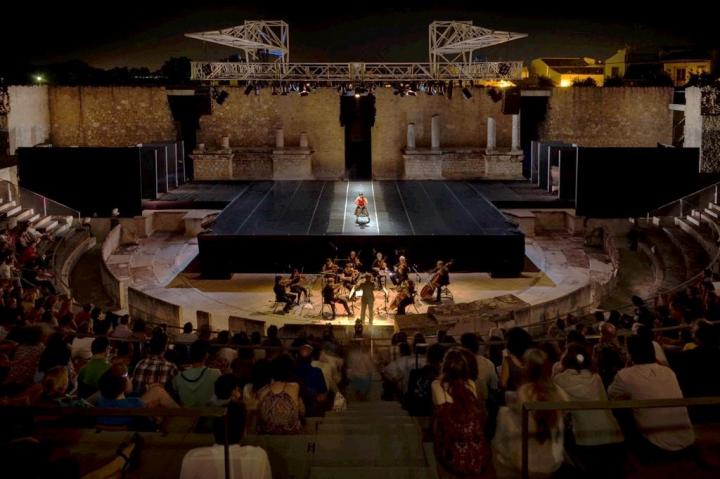A study by the University of Seville has suggested that life-cycle assessment form part of the decision-making process in heritage construction projects from their beginnings

Credit: Universidad de Sevilla
In the majority of studies carried out until now Life-Cycle Assessment (LCA) has been used according to a methodology based on the final evaluation of an already finished design. This article proposes a new approach of using LCA as an evaluation tool at the time of design, so making environmental-impact reduction criteria part of the decision-making process in projects so that they affect the final outcome.
However, very few studies apply Life-Cycle Analysis to heritage interventions. Taking into account the value of heritage building is necessary for planning intervention proposals with minimal environmental impact. On this matter, researchers from the Seville Higher School of Architecture have published a study in which they apply the methodology of LCA to the Roman Theatre of Itálica. Specifically, they have developed tools that link LCA and BIM software so that environmental-impact reduction criteria can be integrated into projects from the moment of their first design.
“Since 2011, we have been carrying out an intervention in the Roman Theatre of Itálica that allows it to be used as a space for contemporary dance and theatre, so that it can hold the International Dance Festival that is organised by Seville’s provincial authority (diputación provincial). The elements that have been designed, and that are some 14 metres above the stage to support the electro-acoustic equipment, are totally removable and allow the theatre to recover its original appearances when there are no performances. For the design of the final solution LCA tools were used, which, as indicated in the article, allowed the final configuration to be adjusted”, explains the University of Seville teacher, Juan Carlos Gómez de Cózar.
“Basically, the strategy of being able to reverse the intervention means that the piece of heritage can be returned to its original configuration if necessary. On the other hand, the use of LCA tools allows for the minimisation of environmental impact that a specific solution produces as opposed to other design options, thus making it possible to carry out heritage interventions that give the piece of heritage value and use and extend its useful life”, adds a member of the research group TEP-130 ‘Architecture, heritage and sustainability: acoustics, illumination, optics and energy”.
Life-cycle assessment
From the environmental point of view, life-cycle assessment applied to buildings makes it possible to calculate the impact of a building over its whole life cycle. To achieve this, every phase of this building is studied (production, construction, use, demolition and end of life) and its impact is measured in different categories, such as, for example, GWP (global warming potential). In this way, it is possible to take into account the complete impact that a building produces, both when it is being built and demolished (including both the materials and the processes that are necessary for the work) and when it is in use (if the design is not correct, the building will use a lot of energy for heating, air conditioning, lighting, etc.).
###
This study was available online since September 2018. However, the printed version of the journal was issued on January 2019.
Media Contact
Juan Carlos Gomez de Cozar
[email protected]
Original Source
https:/
Related Journal Article
http://dx.




